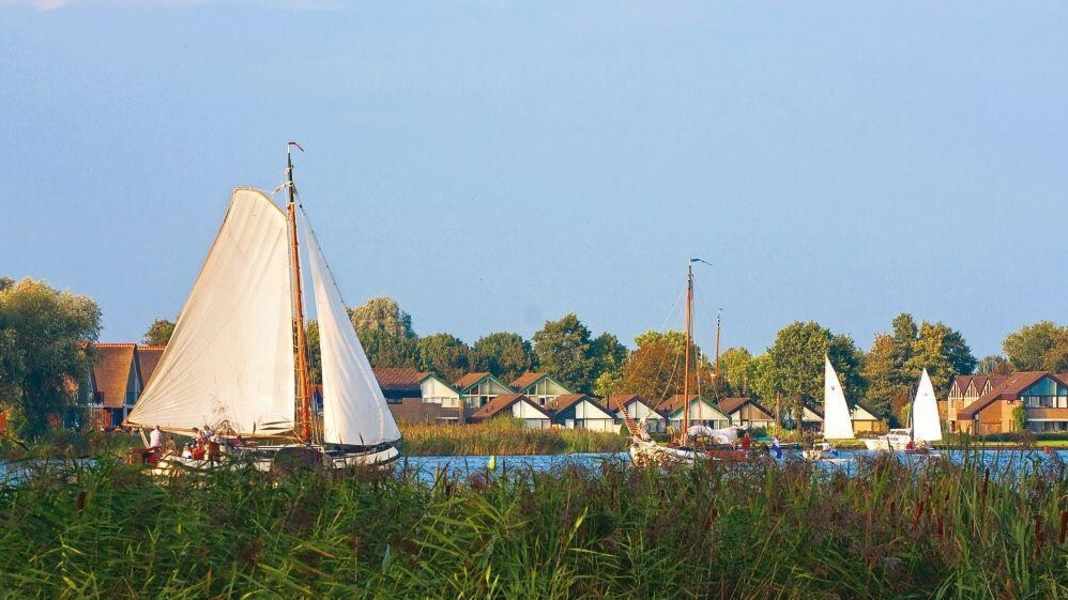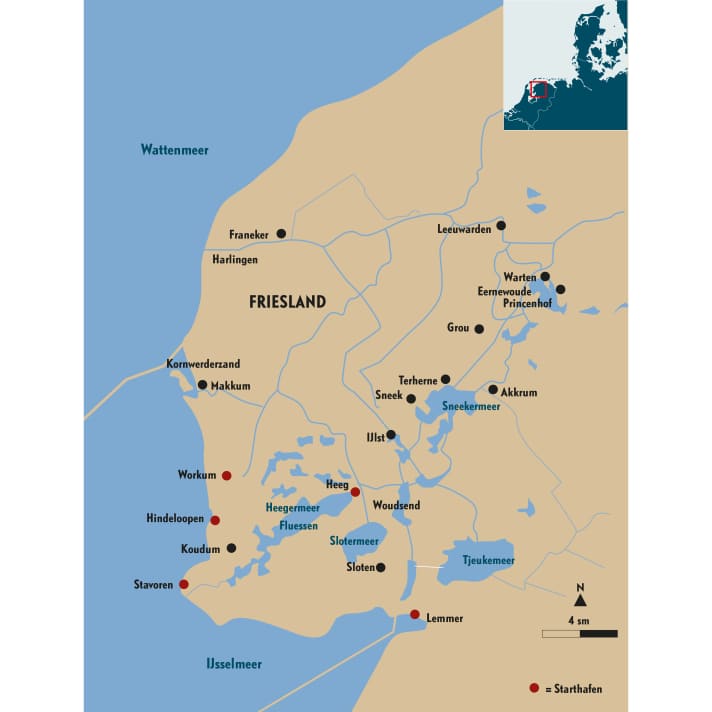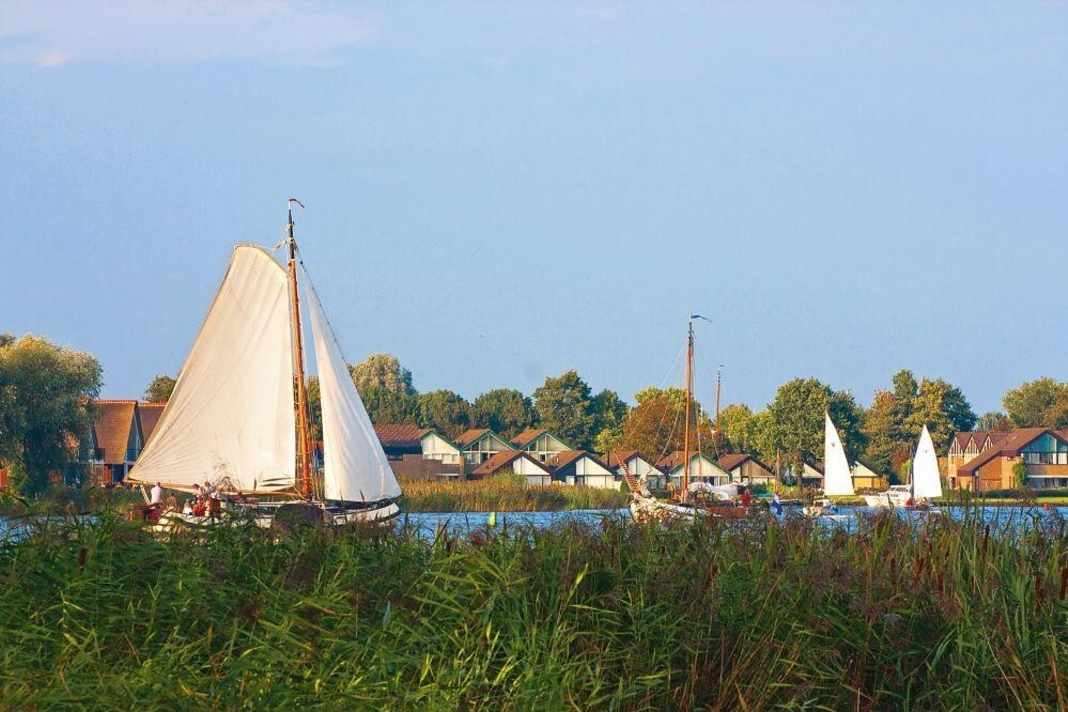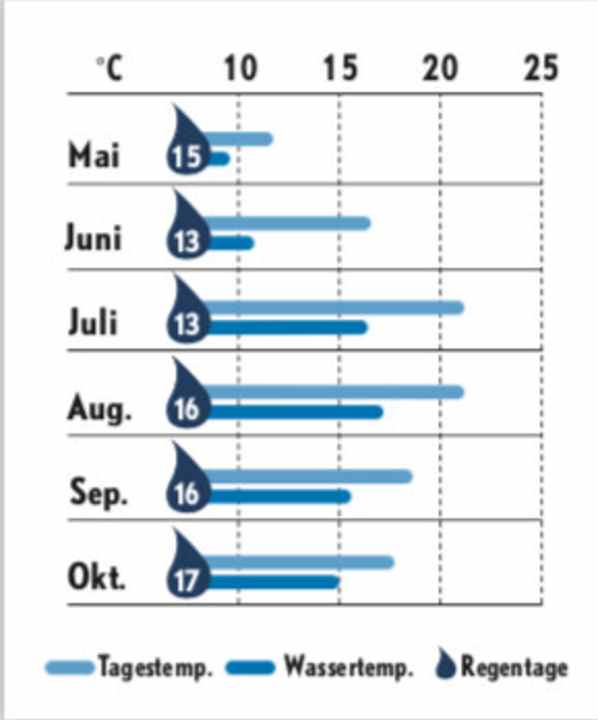
ARRIVAL
The region is popular because it is easy to reach by car or train. Sailors from North Rhine-Westphalia in particular can be there in just a few hours. This is environmentally friendly and has the advantage that you can also bring your provisions with you on the way. You should ask the charter station where you can park your car for the duration of the trip - this is usually possible on the marina grounds or in the surrounding area, usually free of charge. As in Germany, free parking is otherwise only possible in many places for a fee or for a short time. Prohibitions should be obeyed at all costs, the fines in Holland are significantly higher than in Germany. Incidentally, this also applies to obeying the speed limit. Please note: From March 2020, the speed limit on motorways will be 100 km/h during the day.

CHARTER
There is a wide range of charter fleets on offer, from dinghies and small cruisers to 50-foot charter yachts. Small, inexpensive boats such as Polyvalk, Fox 22 and the like are particularly popular with young sailors. They are used for water touring, sometimes with a tent, sometimes with an overnight stay in a youth hostel, which is quite a unique feature of Friesland. Nowhere else in Europe are there as many small boats as here. But of course there are also the normal charter bases with keel yachts from the usual providers, especially in Lemmer, but also in Stavoren, Sneek, Workum and other places. There is also the opportunity to charter the typically Dutch historic boat types in style: Leemsteraken, for example, steel flat-bottomed ships with gaff rigging and wooden masts, which have a unique flair and little draught. Handling is not a major problem for experienced sailors, but there is also a detailed briefing.






Charter prices in Holland are favourable, in Europe they are only comparably low on the Baltic Sea. Very popular with customers and moderately popular with providers is the option of chartering only for a weekend or over public holidays, which is much more common in the Netherlands than elsewhere. You should only pay attention to the draught of the charter yacht, as the waters are shallow. If you really want to visit all parts of the area, such as the very pretty, amazingly natural area around the Princenhof, you should not book a boat with a draught of more than 1.2 metres, otherwise you will be denied access to many sections. A whole range of the yachts on offer in Holland have the shipyard versions with the reduced-draft keels as standard.
WIND & WEATHER

Just like the German coast, the Dutch inland is known for its unpredictable summers, even if super summers like 2018 have become more frequent in recent years. From April to the beginning of September, winds from south-westerly to westerly directions dominate the scene. They blow somewhat weaker here inland than directly on the coast, with an average of 7 to 10 knots or around 3 Beaufort. You should plan for days with rain, with a high probability of 13 to 20 days per month from April to October. However, thanks to the perfect tourist infrastructure on land, you can also spend these days ideally. The fact is: if you are travelling in Friesland, you should be prepared for a few days of bad weather even in the height of summer and, of course, have your full oilskins and boots with you.
NAVIGATION & SEAFARING
The Dutch waters are often shallow and sometimes narrow - coastal sailors have to make some adjustments. The log often shows less than two metres, but groundings are often harmless because there is soft mud in many places. In summer and at weekends it gets crowded, and inexperienced sailors sometimes have to get used to narrow encounters in canals.
Bridges: Only very few are still subject to a fee as they used to be, and some fans still mourn the "clog money" collected by fishing rod and wooden shoe. If it does become due, the sum must be paid appropriately. Pushing in front of the bridge (or lock) is considered very indelicate. Newcomers to the area also need to get used to the fact that they should pass quickly and in a tight line when the bridge opens; the bridge keepers, who often stop all car traffic to open the bridge, do not appreciate delays. Some of the bridge keepers have a lunch break (12 to 1 p.m.) and a coffee break (approx. 4.15 to 5 p.m.); in summer, they are usually open until 8 or 9 p.m. in the evening.
HARBOURS & ANCHORAGES
Many marinas, some with somewhat outdated standards in terms of sanitary facilities, mostly sites with fixed or floating pontoons with stern piles. From June to August they are quite full from 2 pm. If you want to arrive later, you should make a reservation (numbers in the Almanak area guide). There are many quietly located moorings "on greenfield sites" (so-called marrekrite sites). Mooring there is free for three days per pitch, but the crew should buy (and place) the obligatory Marrekrite pennant, which is available for 15 euros from the tourist offices. The proceeds are used to maintain and care for the pitches.
LITERATURE & NAUTICAL CHARTS
The ANWB's "Wateralmanak" is an indispensable reference work for every cruise. The two-volume work lists all telephone numbers, VHF channels and opening times of bridges and locks, among other things; it also contains all harbour information. Each volume costs 19.95 euros and is available from specialised dealers. The app from the Dutch association ANWB is also very useful; it offers water maps, harbour and area information and can be found in the Appstore or on Google Play.Sea chartsMost frequently used are the charts of the ANWB, set 1800 (brand new). Also good are the inland charts from NV-Verlag, set NL 6, 49.00 euros.
TERRITORY CHARACTERISTICS
"Sneekermeer", "Heegermeer", "Tjeukemeer" - in Friesland, crews move from one of around 30 more or less large lakes to the next. They are connected by a dense network of canals and rivers, where you are well protected whatever the wind and weather. An ideal area, especially for small boats and beginners. If this is too narrow for you, simply switch to the IJsselmeer for a detour.
In Friesland, crews sail in the middle of the landscape, they become part of it, so to speak; this is an extraordinary, incredibly exciting experience, especially for sea sailors and newcomers to the area. The reed-fringed sward of the flat meadows seems close enough to touch. At eye level with ruminating cows and bleating sheep, the boats follow winding river or canal courses.
Once you arrive in the great old towns such as Sloten, Sneek or Heeg, you don't feel like you're on a sailing trip when strolling through the town. You can take a completely uninhibited look into the gardens of local residents. This contrasts with the inland lakes such as the Sneekermeer or Heegermeer. There, everything seems much more spacious and wider than it actually is. In the middle of it all are tiny islets in many places, artificially created and yet still a natural idyll.
There is also a lot to learn about seamanship. For example, that the echo sounder often shows a zero before the decimal point and yet nobody gets upset. It is so shallow everywhere, but the boggy peat of Friesland forgives almost everything. However, if you want to take a keel yacht into the area, you have to make compromises: Most places can be reached up to a draught of around 1.3 metres, above that it often becomes too shallow. The shorter the keel, the more exciting corners there are to explore.
Equally unusual were the many close encounters with other ships. This kind of proximity is otherwise only familiar from road traffic. Or the mini-manoeuvres and waiting curls during the unusual stops in front of bridges and locks. Not to mention the surreal feeling of hovering over a four-lane motorway with your own yacht - aqueducts make it possible. And dinghies and small cruisers everywhere, which seem almost extinct on the Baltic and Mediterranean.
Those who tackle the area can sail exclusively inland - or venture into the Waddenzee via Harlingen and then into the IJsselmeer. Depending on the wind direction, such a round trip is sometimes better sailed clockwise, sometimes anti-clockwise. In any case, a perfect trip for a varied week.

